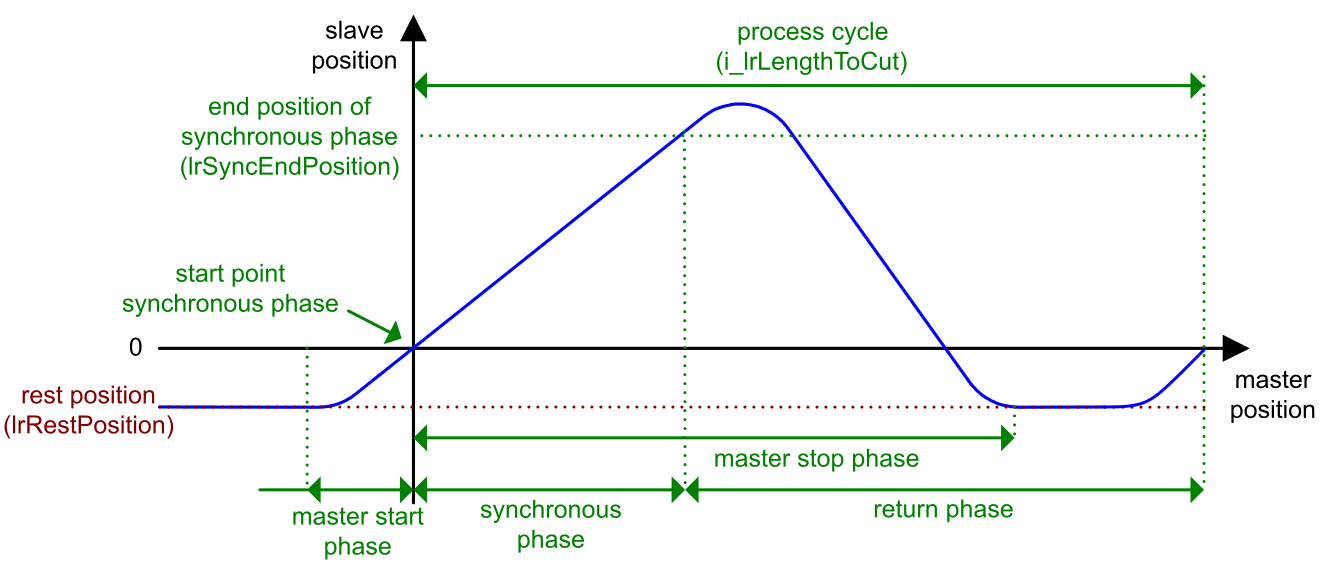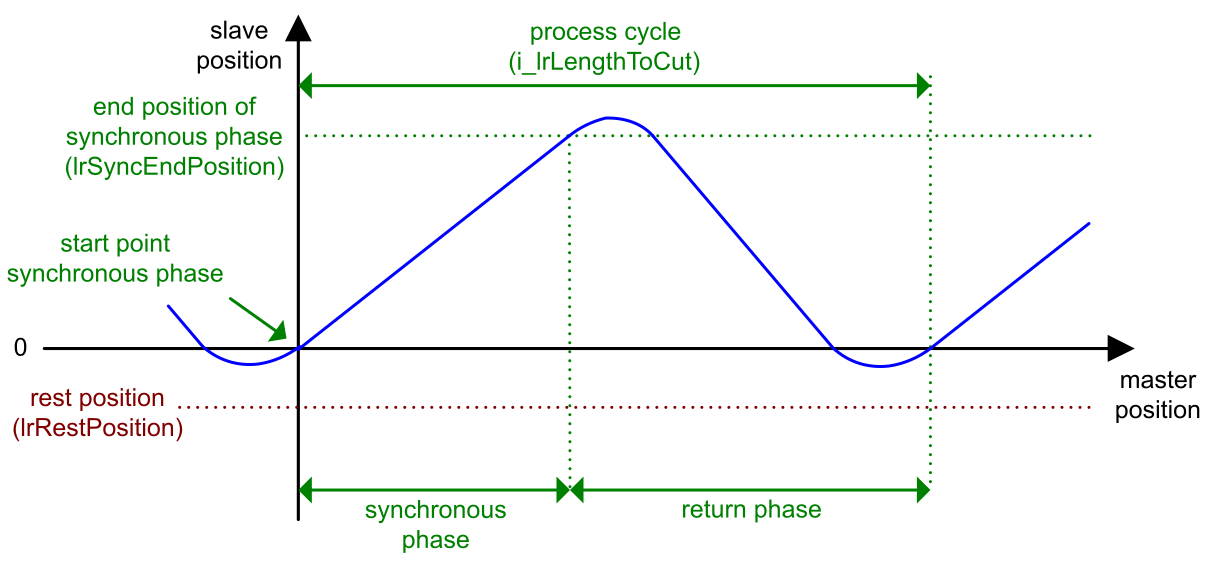FlyingShear
Phases of the Flying Shear Process
A flying shear cycle consists of 3 phases:
|
Phase |
Description |
|---|---|
|
The slave axis accelerates up to the velocity of the master axis (depending on the value of the parameter lrSlope) to be synchronized at the beginning of the synchronous phase. The movement from the rest position to the start point of the synchronous phase is calculated as follows (in units defined for the master axis): 
The parameter lrRestPosition must have a value < 0. |
|
|
The slave axis is synchronized with the master axis and the operation on the product is performed. The synchronous phase starts at master position 0 and slave position 0. A new process cycle is started with the start point of the synchronous phase. |
|
|
The slave axis is decoupled from the master axis and can continue operation in two different ways.
|
During the flying shear process, the slave axis can return to the rest position or short process cycles can be performed without returning to the rest position as described in the following sections.
Profile of Master/Slave Positions with Rest Position
In general, the process is such that the slave axis returns to the rest position according to the following procedure:
-
The slave axis starts in the rest position.
-
The slave axis accelerates to the velocity of the master axis.
-
The slave axis follows the master synchronously during the working process (synchronous phase).
-
The slave axis returns to the rest position.
The curve illustrates the position profile of the slave axis in relation to the master axis with return to the rest position.

Profile of Master/Slave Positions without Rest Position
The curve illustrates the position profile of the slave axis in relation to the master axis for short process cycles without returning to the rest position. The position profile of the slave is changed to short process cycles if the product length is shorter than lrMasterStopPhase + lrMasterStartPhase + 1.0.
